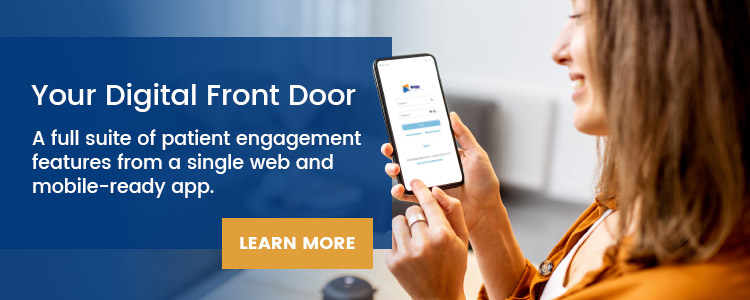Why Telemedicine Software Failed Before COVID-19
- Josh Orueta
- August 07, 2017

Updated on January 1, 2021.
Telemedicine is the use of technology for remote patient monitoring and medical consultations. Before COVID-19, some healthcare organizations saw telemedicine software as a logical response to ballooning healthcare expenditures and an ever-increasing physician availability shortage. During the pandemic, it is no longer just an option to consider but a necessity. Integrated with patient portals, patient engagement mobile apps, remote patient monitoring software, and health tracking apps, telemedicine is also part of a growing market for patient engagement solutions.
However, going virtual with healthcare has not been straightforward. Before COVID-19, telemedicine experienced many hurdles, including lags in adoption, reimbursement, privacy concerns, and health policy barriers.
Recommended: Telehealth vs. Telemedicine
Telemedicine software adoption: generating physician buy-in
Many private companies specialize in telemedicine software, such as virtual care applications or 24-hour “ask a doctor” services. These telemedicine companies have only skyrocketed in number due to COVID-19. The other option is for a physician who has regular appointments to check in with patients remotely via a telemedicine portal or a similar application. In this case, many physicians don’t want to change how they practice medicine. An ideal telemedicine software solution should mimic the healthcare organization’s original workflow and integrate seamlessly with their Electronic Health Record (EHR), Revenue Cycle Management (RCM), and Practice Management (PM) software.
Adoption: developing accessible telemedicine portals
Patients with chronic conditions that require frequent check-ins can benefit tremendously from telemedicine portals. Older and typically less tech-savvy seniors, for example, may find it difficult to connect or use remote patient monitoring devices between office visits. (30%[¹] of elderly patients said they were uncomfortable using telemedicine solutions during COVID-19.) On-screen interaction may not be easy for those with limited vision. This makes it difficult to engage patients. These obstacles can be overcome with accessible technologies, and health IT professionals should focus on this.

Privacy: HIPAA Compliant Remote Patient Monitoring and Consultation
In telemedicine, personal health information is sent in several ways, including text, audio, video, images, and real-time remote patient data from sensors. This can burden healthcare providers who must comply with HIPAA privacy rules. While many telecommunications tools we use daily may not meet these standards (video, email, SMS), there are specialized platforms that do — including Bridge Patient Portal.
Policy: Taking Advantage of Interstate Licensing
States have different requirements about where a physician needs to be licensed to provide telemedicine services: In some cases, it’s the state where the practice is located. In others, it’s the state where the patient is located. Twenty-eight states[²] and one territory have now introduced or enacted Interstate Medical Licensure Compact legislation, which will make it easier for physicians to practice in several states. As more states join, medical practices may need to be guided on how to get their healthcare teams licensed.
Recommended: The Rise Of Telehealth Software During COVID-19
Policy: Addressing Different Reimbursement Rules Across States
Reimbursement is another area of inconsistency: Rules about which telemedicine services need to be covered by Medicare, Medicaid, and private insurance vary from state to state. This is being considered at the federal level. During COVID-19, patients are not required to pay for telemedicine services pertaining to the coronavirus. Many payers have adapted their policies to include coverage[³] for telemedicine services. See how the government assists healthcare providers in providing telehealth services, read Bridge’s Guide To The FCC Telehealth Fund.
Previous hurdles preventing telemedicine are being bulldozed through to ensure patients receive care during the pandemic. Telemedicine is more accessible and effective for both physicians and patients now more than ever.
Discover how telemedicine has changed due to COVID-19. Read: The Future of Healthcare Telemedicine Solutions.
- mHealthIntelligence (2020). Surveys Suggest Seniors Aren’t Using Telehealth During COVID-19 Crisis. [online] mHealthIntelligence. Available at: https://mhealthintelligence.com/news/surveys-suggest-seniors-arent-using-telehealth-during-covid-19-crisis [Accessed 21 Dec. 2020].
- CompHealth. (2020). Interstate Medical Licensure Compact States List [And Guide for 2020]. [online] Available at: https://comphealth.com/resources/interstate-medical-licensure-compact/.
- Affairs (ASPA), A.S. for P. (2020). Telehealth: Delivering Care Safely During COVID-19. [online] HHS.gov. Available at: https://www.hhs.gov/coronavirus/telehealth/index.html#billing [Accessed 21 Dec. 2020].